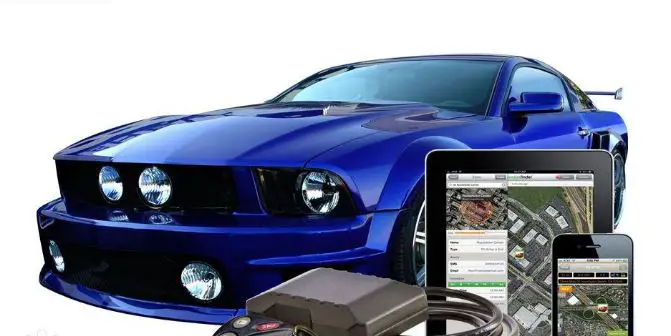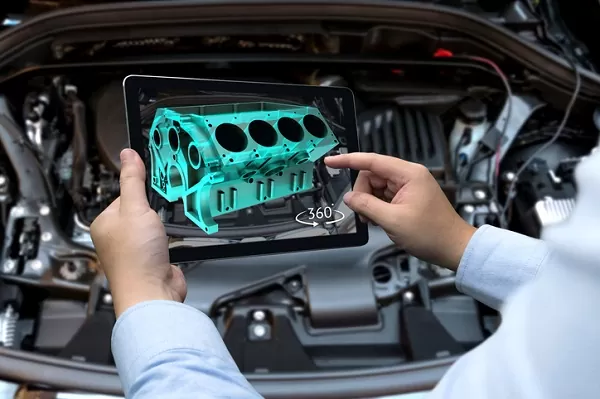Car tracking has become an integral part of our lives for quite some time now. But do you know that it wasn’t the same as today compared to when it was created? Tracking devices may appear to be a relatively recent technology but they have, nevertheless, existed in some form since 1978. Car tracking devices use GPS technologies to locate your car with precision.
Read on to learn about the evolution of car tracking devices from basic to advanced.
What are Car Tracking Devices?
A car tracking device is a portable gadget that allows users to track and monitor their car’s position. They use the Global Positioning System which employs satellite navigation data to deliver real-time information on the location, speed, direction, and distance of your vehicle. The benefits of personal car tracking include theft prevention, improved young driving safety, and insurance reductions.
History of Tracking Technology
Tracking technology has a long history to itself. Listed below are the events that lead to GPS tracking technology for cars today:
1)Creation of the GPS tracking technology
The global positioning system (GPS), which was first developed for military and intelligence purposes during the height of the Cold War in the 1960s and was inspired by the Soviet spacecraft Sputnik in 1957, consists of a network of satellites orbiting the Earth at fixed points above the planet and beaming down signals to anyone on earth with a GPS tracking device.
The first experimental Block-I GPS satellite was launched into space in 1978, marking the beginning of GPS technology and the development of vehicle tracking systems. This satellite system, built by Rockwell International, was a successful test, and by the end of 1985, 10 additional Block-I satellites had been launched to support the concept of GPS.
Early on, there weren’t enough satellites orbiting our planet, thus the technology wasn’t yet ready for usage. After years of gradual expansion, the last of the original 24 satellites was launched on January 17, 1994, and the GPS was deemed fully operational. The same technology is used in fleet tracking today.
2)Public implementation of GPS
Early GPS technology was primarily intended for military usage. In the 1980s and 1990s, the military had clear uses for GPS technology, but there was little interest from the general population. President Bill Clinton issued a directive in 1996 requiring the creation of a public system that would benefit the average user after concluding that the system may be useful to civilians and the military.
Because of these legal changes, GPS technology is now accessible to the average person, who can benefit from utilizing it to track their cars. Additional improvements to GPS technology and gadgets were developed in the 1990s, including tweaks to user-friendly policies. The last GPS satellite was sent into orbit around the globe in 2006.
3)GPS tracking devices
At this time, GPS was extremely pricey. A GPS receiver is required to be placed in each asset. There were astronomical subscription costs. Keep in mind that, despite being not new, satellite technology was very expensive to operate.
Prices for using the system that car owners had to pay reflected this. Since the technology was still in its infancy, these early GPS-tracking gadgets frequently caused more issues than they resolved. They were not extensively used, and the only car owners who had the money to invest used GPS technology.
4)GPS tracking devices today
GPS tracking technology is still in use. There have, however, been numerous advancements. The information a car owner receives is of the highest accuracy and is delivered in real-time thanks to technological advances. Efficiency has increased while time delays have decreased.
GPS is now available at the press of a button thanks to the development of mobile phones. Faster and more precise information transmission is made possible by mobile cellular technology. Additionally, there is less need for pricey GPS tracking systems in vehicles. The “geo-fencing” technology is another innovation that enables car owners to create a virtual wall around their cars. This avoids unauthorized use and lessens the likelihood of theft.
What are the Benefits of Car Tracking Devices?
It’s natural to be hesitant about placing a tracker in your vehicle. Here are a few reasons why you should install a car tracking system in your car.
- Provides the location of your vehicle in real-time
Assume you went to the mall to do some shopping and parked your car in the parking lot. You go home from shopping and can’t remember where you left it. Naturally, you’d be concerned since you assume it’s been stolen.
However, with a GPS tracker, you can quickly find your vehicle using your smartphone. Most likely, you just forgot where you parked your car. In any case, a vehicle tracking system will inform you of your vehicle’s exact whereabouts at any given time.
- Minimizes the fuel cost
Fuel is one of the most expensive expenses for car owners. Car owners may use GPS monitoring to learn when and how their vehicles are driven. Speeding and other inefficient driving habits, such as forceful acceleration, can reduce fuel economy and raise expenses.
You may also cut your gasoline costs by selecting the most direct routes to your destination. With access to route planning, you can guarantee that you are taking the most efficient routes and using the least amount of gasoline.
- Helps recover your car in case it is stolen
For a long time, car theft has been a serious issue. Your vehicle may potentially be stolen if you are not cautious. Cars are costly, and it would be unfortunate if you were to lose your vehicle to carjackers.
GPS trackers can assist you in defeating carjackers at their own game. This is because a GPS tracker can pinpoint your car’s exact position. This means you may retrieve your stolen vehicle while also assisting authorities in apprehending the auto thieves.
- Allows you to get emergency help
Roadside problems are rather common, and you will almost certainly want assistance. You can notify emergency personnel of your exact position with a GPS tracking device. That way, they can arrive to you quickly and assist with the issue.
This comes in handy when you’re stuck in the middle of nowhere. Giving directions to your place might be difficult and time-consuming. All you have to do with a GPS tracker is provide your position and wait for assistance.
- Reduces driving time significantly
A suitable tracking system will assist drivers in reducing the amount of time spent on the road. GPS trackers, with their real-time location, can assist you in determining the optimal routes for your cars. You may then use the less busy routes to get to your destination quickly.
The less time you spend driving, the less money you will have to spend on petrol. This can result in significant fuel cost reductions.
- Helps determine any cases of car tampering
When your vehicle is tampered with, advanced car tracking devices will notify you. If someone hits your car or tries to tow it, an alert will be sent to your phone. That way, you can take the necessary actions to improve the problem.
Conclusion
In today’s world, car tracking systems are more efficient, capable of providing data in real time, and may be used to track moving items using your smartphone, tablet, or computer. You can get a plethora of data making it possible for you to save money and time.
FAQs
When was GPS put into cars?
Iter Avto, the first GPS navigation system, was installed in an automobile in 1930. The technology used paper maps rolled together and shown on a screen, and a wire linked to the car’s speedometer controlled the scroll speed of the paper maps. In summary, the speed of the paper maps was related to the vehicle’s speed. Later the same year, in Japan, Honda introduced the world’s first automated commercial navigation system, the Electro Gyro-Cator navigation unit. This Electro unit operated on a tiny helium gas gyroscope and resembled a gadget used by fighter pilots during wartime.
Who is the inventor of GPS trackers?
Roger L. Easton is credited with inventing the Global Positioning System (GPS). Roger was in charge of the Naval Research Laboratory’s space applications and was recognized as a key figure in the development of GPS. Roger was developing technologies to aid in the tracking of satellites, similar to what the Soviet Union’s Sputnik was attempting. From 1972 until 1978, Brad Parkinson managed the NAVSTAR GPS Joint Program Office. As the program’s initial director, he oversaw the GPS’s conception, development, and deployment, giving him the moniker of ‘Father of GPS.’
When did GPS trackers come out for cars?
GPS in cars has been available for more than 20 years. Previously known as GPS navigation, this technology has evolved into a proactive system that may help save money and keep people safe. Before GPS, car owners would maintain a physical map in their vehicles and refer to it if they were lost or traveled to a new location. However, GPS for cars became widely available in the early 1980s, when Honda debuted the first GPS map-based navigation system in its vehicles. GPS in automobiles has evolved since then.








